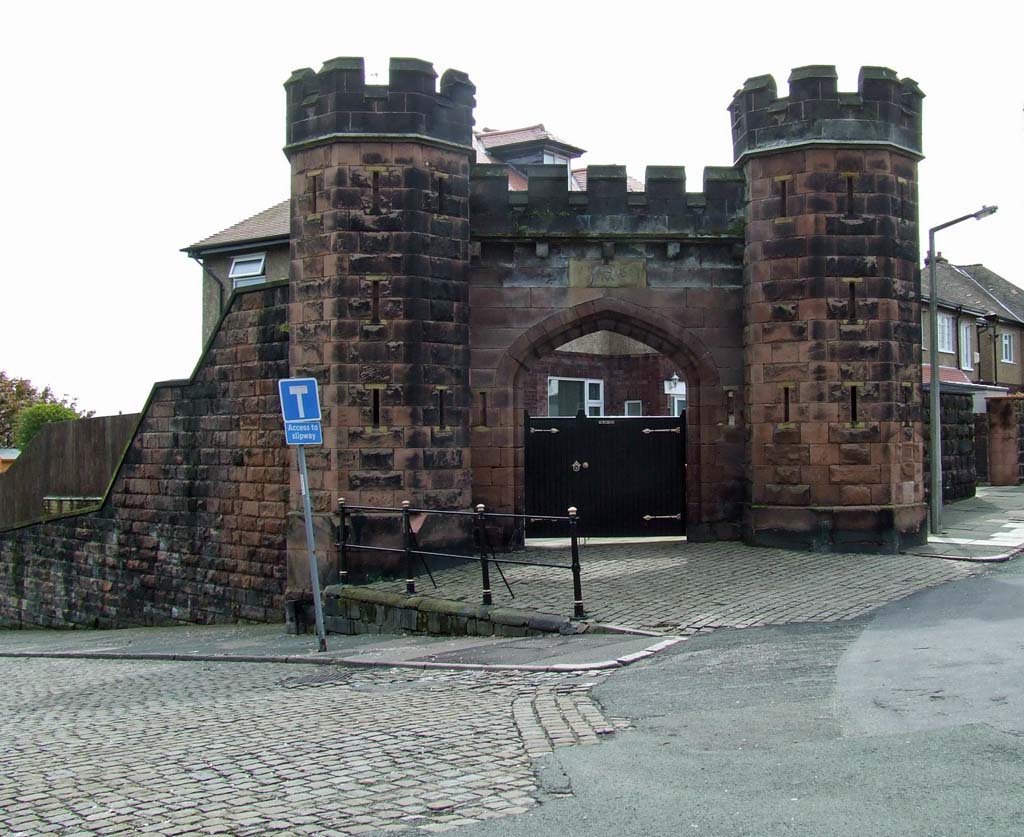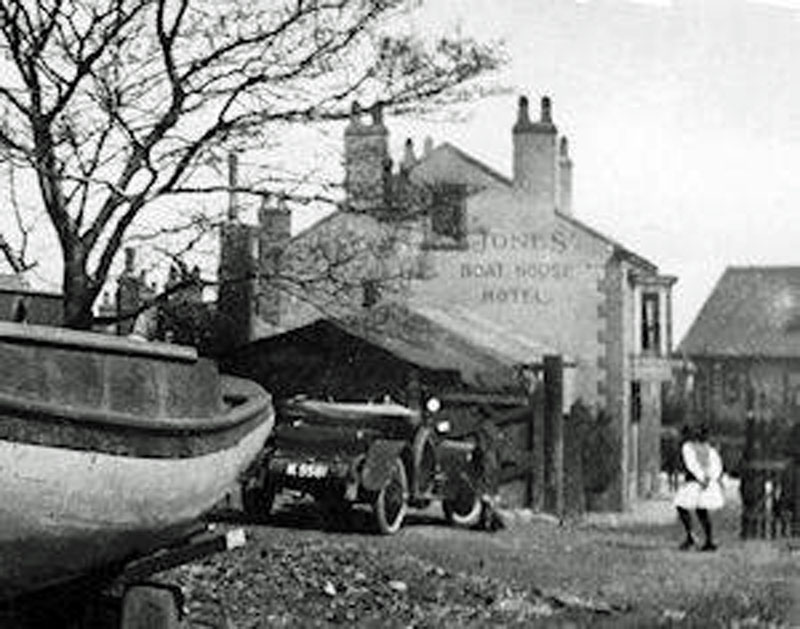 |
Rising from the river near Liscard in Wallasey
stands Magazine Village - a community which, before gunpowder had
bestowed upon it an air of respectability, was known and denounced as
'Hell's Brow' - The Pilot Boat-house, usually known as Boat-house, was
originally built in 1747. It was called the Pilot Boat House because a
small boat belonging to the Pilotage was kept at the back of the inn.
Post Mortem's of those who were found drowned in the river were held in
the public house. The Pilot Boathouse mainly catered for the less-to-do
artillery men from the Battery and workmen who were engaged in promenade
building. It is said that the Pilot Boat's saloon reeked of thick-twist
tobacco, that the floor was covered in sawdust and that the numerous and
commodious spittoons were well blessed.
The Magazine at New
Brighton was used by the owners of sailing ships, which were compelled
to carry guns to fight pirates. When the ships arrived at Liverpool,
they lay off the Magazines to discharge powder. Nearby would anchor
outward-bound ships, taking aboard the powder.
The story of the
Magazines began in 1737, when a magazine for ship’s gunpowder was built
in Liverpool on a site now swallowed up by Brownlow Hill. That was on
the rural fringe of the port, the nearest buildings being in
Church Street. But Liverpool was taking rapid seriously in those
years, and there was a danger that the gunpowder might expand too – not
only when in store but when being taken through the streets to the
ships.
Then, in 1751 a new approach was made to the problem in a
traditional English manner, a committee was set up. Its
deliberations were brief and to the point, the magazine must be
moved. It selected a plot on the bank of the Mersey, the opposite bank!
A secluded plot was decided upon at the Magazines. It was modest
enough in size, amounting to an acre which was named Warringer Close. It
cost Liverpool £30. Today Lichfield Street and Aylesbury Road mark the
spot. The plots were split up into small sections and various owners had
their own powder store. |
 |
| They were renovated and enlarged in 1838-39,
and were still in use until 1851, when it was decided that in future
explosives would be stored in hulks further up the river. The move was
probably prompted by safety concerns, the land around the Magazines
having become much more built up. In 1858 a battery was built on the
site, and the imposing gateway with its crenulated towers, survives to
this day as does the perimeter wall which now encircles several houses.
Facing the south wall of the battery, on the other side of the road
(Magazine Brow) are several cottages, perhaps dating from the 17th
Century. These were probably first inhabited by fishermen, but it is
thought that they were later occupied by offices from the battery. The
Magazines were often referred to as Liscard Magazines and the fort as
Liscard Battery, but the name Liscard later became attached to an area
about a mile away where Wallasey's main shopping area is situated. A
quaint circular dwelling may be seen about fifty yards from the fort's
gateway, this being known as the Round House. Now forming part of a
private residence, this was once occupied by the battery's watchman.
Further along Magazine Brow are situated two public houses, the Pilot
Boat and The Magazines, the latter having been built in 1759 and once
used by sailors who were having their outward bound ships reloaded with
munitions at the Liscard Magazines. This was closed down in 1851. |

Stone above archway
|
Before the eighteenth century the Brow was
isolated from the other areas of Wallasey by a treacherous mere, a
wind-swept moor, and by Bidston Moss. For many years the only access to
the village was by way of the shore. Due to its isolation the area
attracted wreckers and smugglers. Often posing as simple boatmen and
hard-working fishermen they lived in the Brow's squalid muddle of
hovels. However, the vagaries of passing time transformed the little
hovels into some of the most delightful and sought after cottages in
Wallasey.
Magazine Brow, which runs from Holland Road to Fort
Street parallel to the Promenade, is part of old Wallasey. Mr Ashby
Pritt says in his young days the inhabitants of the Magazine Brow had a
somewhat sinister reputation and these simple (?) fisherfolk rejoiced in
their locality being known as ‘Hell’s Brow.’ Holland Road is named after
the Holland family who resided in a house situated in what is now Vale
Park. |

1935 |
| In 1755 A man wrote to the authorities
complaining strongly about the enormous amount of gunpowder he believed
to be stored on a secluded plot of land by the Mersey. He felt it was
too close to his house to be comfortable, and he requested to know what
would happen if it blew up. To walk between the Magazines and Liscard
today calls for some energetic walking, back then there was then nothing
to protect Liscard from an explosion. The danger was real, for buildings
were not as solidly built as are today, and gunpowder barrels had a
habit of leaking. Tthe reply he man got from the authorities was “Dear
Sir, It would blow you all to Hell.” |
| |
| |
| |
| none of the above script is actually mine, its
been compiled over years from email contributions, so occasionally will
overlap. |
 |